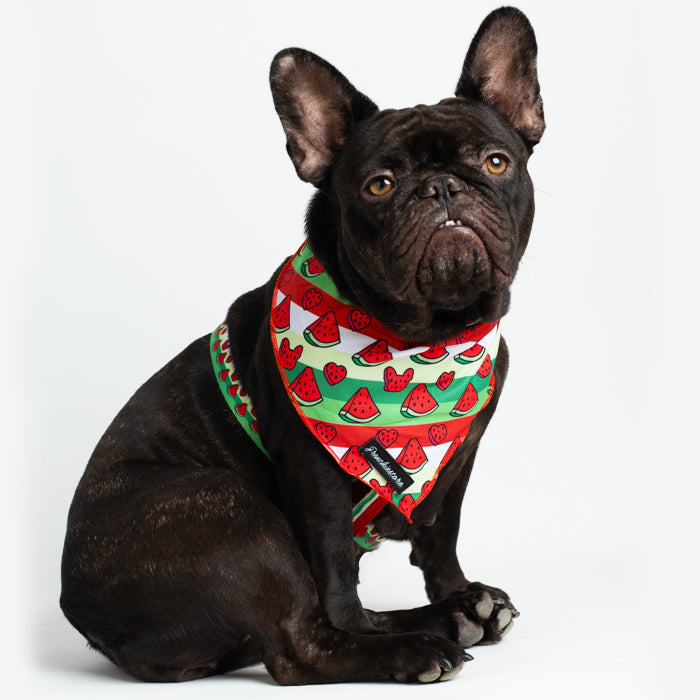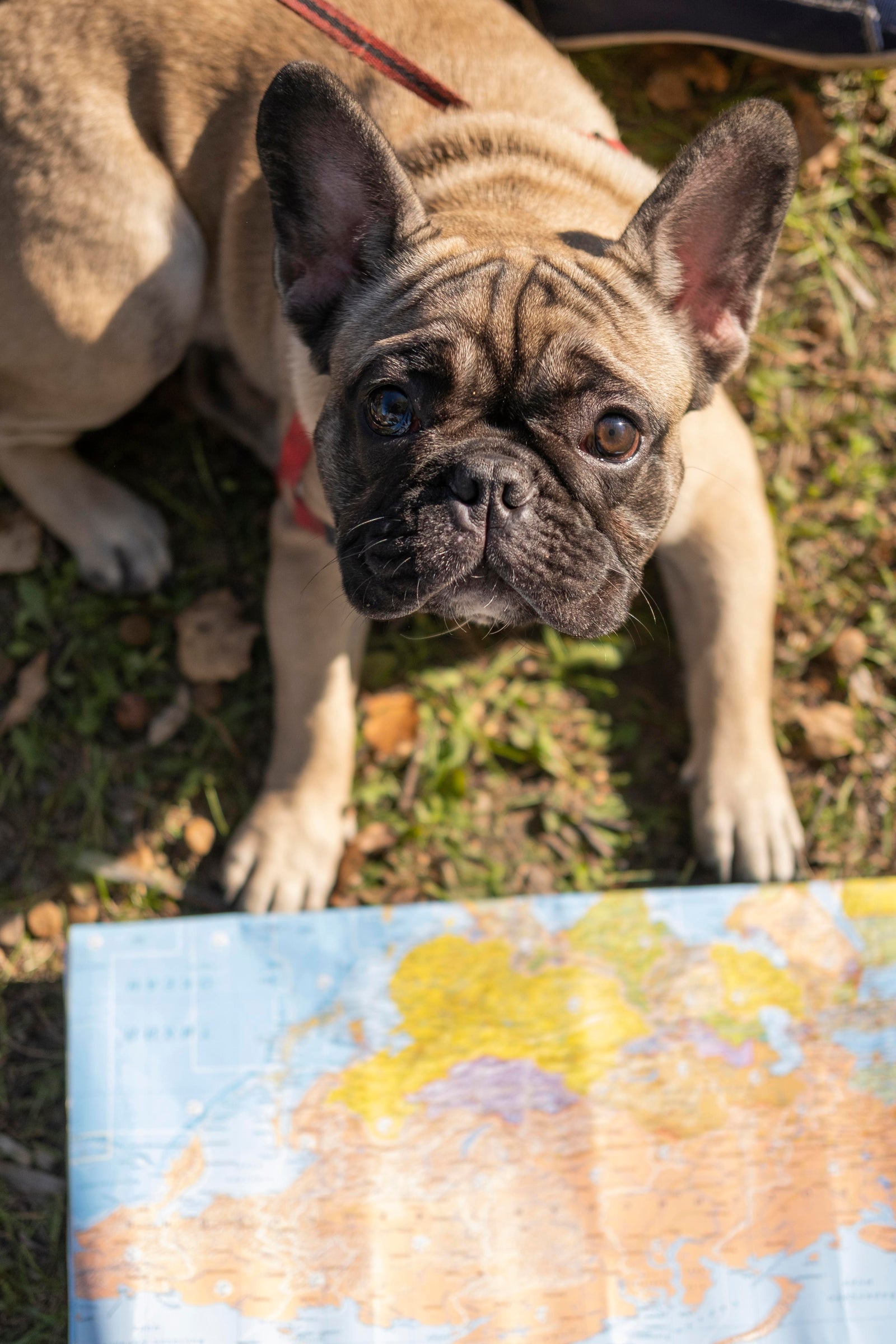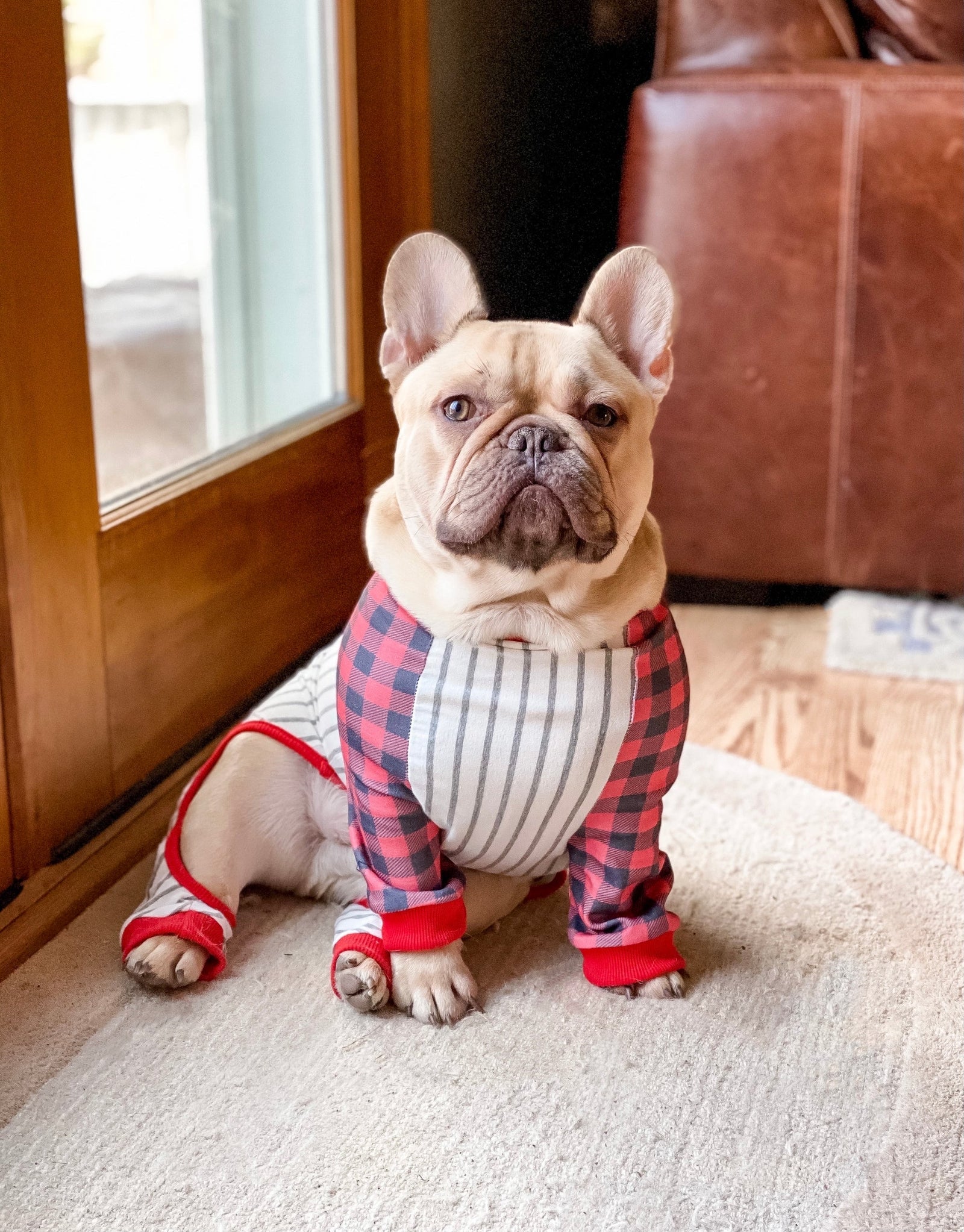Your Cart is Empty
🔥 CLOSE OUT SALE 🔥50% OFF sitewide use code clear final sale, no returns or refunds
🔥 CLOSE OUT SALE 🔥50% OFF sitewide use code clear final sale, no returns or refunds
🔥 CLOSE OUT SALE 🔥50% OFF sitewide use code clear final sale, no returns or refunds

When it comes to administering anesthesia to your French bulldog, it is of incredible importance that you consult a vet who is aware, has the experience and has produced excellent results with other brachycephalic breeds like Pugs French bulldogs, and other bulldogs.
French bulldogs are a brachycephalic breed which means that your Frenchie's head and airway structure are not particularly the same as other dogs, and this presents challenges. His small, pinched nostrils (stenotic nares) encourage the tissues within his airway to obstruct his airflow (everted laryngeal saccules), and he has a naturally narrow trachea.
These nostril features are majorly responsible for your bulldog tiring quickly and not doing great in hot weather. Sometimes, these features can be surgically corrected, sometimes not. Regardless, if your Frenchie is slated to go under anesthesia, he has to be closely monitored.
Generally, it is possible that most French bulldogs can do well under anesthesia, but they have also had a long and traumatic track record of doing horribly. Some have even died while under or after the procedure was over. If your French bulldog may have to be administered anesthesia, or you'd like to be armed with all the necessary information, this is the place to be.
Anesthesia is a standard medical procedure. Most young puppies are administered anesthesia during spaying or neutering and may have to receive it again at least once during their lifetime.
General anesthesia is achieved by administering drugs that keep a dog's nerve functions suppressed. This leads to unconsciousness, and in this state, there is muscle relaxation and a complete loss of sensation. So, he is unable to move and cannot feel any pain. There is also local anesthesia which is achieved by desensitizing only one part of an area of the body like a tooth, legs, or spinal column.
Anesthesia in French bulldogs is much riskier than in other breeds. The word anesthesia means "lack of sensation," and Frenchies cannot afford to have that. Even without having a breathing problem, the relaxation of their respiratory muscles is not a great thing, which is why any brachycephalic dog that has to go under anesthesia must have an endotracheal tube (ET) placed in their trachea.
This is because their airway needs to be constantly protected and at all costs. The tube should be left in until the effects of the anesthesia have completely worn off and the dog is now fully awake and trying to chew the tube.
Whenever any anesthetic procedure is carried out, there is always the risk of everything going south, no matter how brief or elongated the procedure is. There is a general estimation that at least a few dogs will have some adverse reaction to anesthesia.
These reactions may cover a wide range of mild swelling at the injection site, a mild decrease in cardiac output, and a full-blown anaphylactic shock and death. However, experts say that the risk of anesthesia resulting in death is less than driving to and from the anesthetic procedure.
Another potential risk that could come up is if your Frenchie has not adequately fasted before the procedure. When French bulldogs and dogs, in general, are under anesthesia, they lose the average ability to swallow. Usually, during swallowing, the epiglottis (a cartilage flap) closes over the entrance of the windpipe and prevents food or water from entering the lungs.
But when under anesthesia, this is not so. So, if there is food in your Frenchie’s stomach, he could vomit while under anesthesia or a few minutes after. If this vomiting happens before the epiglottis can act, the vomit can enter into the lungs and cause aspiration pneumonia, a life-threatening condition.
There are other risks associated with anesthesia, but they are rare, and they include organ system failure, clotting disorders, kidney or heart failure, visual impairment, and seizures. An experienced and skilled vet will ensure that every measure is in place to minimize these risks during anesthesia.
Before anesthesia is administered, there are several steps and procedures involved. And with every step lies opportunities to minimize or completely eradicate the risks of anesthesia for your Frenchie. Here is an outline of how these steps work.
The process of administering anesthesia usually starts with an assessment. The vet will go through every medical history, test result and perform a physical exam. Once the results from this assessment have complied, it enables the medical team to figure out any risk factor and have interventions for the risks discovered. Some of these include low blood pressure, slow heart rate, etc.
The next step is the administering of pre-anesthetic medications. These medications help to reduce stress, manage any pain and reduce the dose of other anesthetic drugs. These medications are specifically tailored to each dog. Generally, French bulldogs will receive less than other dogs.
Your vet may also recommend the placement of an intravenous (IV) catheter as part of the preparation for the procedure. The IV catheter is used to provide intravenous fluids to keep your Frenchie hydrated; it can also serve as a way to administer direct emergency medication if any need for it arises.
Next is the endotracheal tube, placed to protect the airway and lungs from accidentally inhaling any foreign material like saliva, blood, water, etc. This ET tube is essential. During the procedure, the medical team ensures that they do their very best in monitoring your Frenchie’s vital functions.
It can be physically and emotionally stressful to prep for surgery. There’s usually a lot of information to remember. But the most important thing is to stick to your vet’s instructions and ask any questions you might have.
It would be best if you started prepping at least one whole week before the procedure. This is because your vet may need to do several additional tests to ensure that your French bulldog is fit for the procedure and comes out of it successfully. This time is also for you to figure out your movement schedule to and from the hospital.
If you regularly bathe your Frenchie, you may be required to wash him a few days before the procedure rather than after the procedure. This is to make sure that the incision is kept dry after the procedure.
You should make sure that you ask every question, including when your Frenchie should stop eating and drinking. It would be best if you also had a recovery area prepared, keep it warm and clean. Have all of his dietary needs sorted before the procedure.
After the surgery, your vet will be given detailed instructions on how to care for your Frenchie. He will very likely need to take medications to help with post-surgical pain and reduce the risk of secondary infections. Sometimes, your Frenchie may have to wear the "cone of shame" if there is an incision. The collar is essential to ensure that the incision heals and doesn't reopen.
Your Frenchie may have to be under a few restrictions like no bathing for two weeks, keeping him in his crate, and reducing activity levels. All these may seem unfair to your Frenchie, but it is crucial for proper healing. Your vet should be on your speed dial so that you can call if you notice your Frenchie exhibiting any strange behavior.
If you want to have more information on the general health and wellbeing of your Frenchie, let us be of help to you. We have great content for you; sign up for our Frenchie Blog to access all that we have.
February 03, 2025
Hi there
My French bulldog called pixie she is a therapy dog, she’s going to be 9 years old in march. I recently had her to the vets with a growth just under her eye, a test was made and came back that it could be cancerous, they said “the growth has nasty stuff growing inside it”
Pixie had an operation in 2021 for a burst disc in her neck, whilst under anaesthetic she went into cardiac arrest, this was before the actual operation. The vets went ahead with the operation but she had another cardiac arrest. However, she recovered and the operation was successful. Pixie was on a number of pain killers and sedatives for two days leading up to the operation. I don’t know if this would have anything to do with her cardiac arrest? However, I now have to make a decision if I should put her but under anaesthesia to have this growth removed. I am at my wits end with what decision to make. Should I take a chance of her having ANOTHER cardiac arrest with the potential of death or leave her with the growth and see what happens but have the unfortunate chance this cancer has or could spread.
Please if anyone can help me with some information or help me decide the best approach for my beloved frenchie.🙏
Comments will be approved before showing up.

French Bulldogs, with their bat-like ears and affectionate personalities, have soared in popularity. However, their demand has fueled a surge in unethical breeding practices and scams, leaving many hopeful owners heartbroken or financially drained. This guide equips you with actionable steps to find ethical breeders, recognize red flags, and explore adoption alternatives—ensuring your Frenchie journey is safe, responsible, and rewarding.

For millions of pet owners, leaving a furry family member behind during travel is unthinkable. Whether for emotional support, medical necessity, or sheer companionship, the demand for pet-inclusive air travel has surged. By 2025, over 30 global airlines now permit cats and dogs in the cabin—a dramatic shift from just a decade ago, when pets were routinely relegated to cargo holds. This guide explores the evolving landscape of pet-friendly air travel, diving into airline policies, legal distinctions, health considerations, and tips for ensuring a smooth journey for all passengers, both human and animal.

Crate training is often associated with puppies, but it can be equally beneficial for older French Bulldogs. Whether your Frenchie is new to your home or simply hasn’t been crate trained before, introducing them to a crate can provide them with a safe and comforting space. Here’s how to do it effectively while keeping their unique personality and needs in mind.
Helpful information on the French Bulldog dog breed.
We will also notify you with new releases and special offers.
Informational posts about French Bulldogs. Tips and helpful advice on the Frenchie breed and other breeds.
Sign up to get information & expert advice about pets' health and safety. We will also notify you with new releases and special offers.
Sue Rice
February 03, 2025
Appreciate the advice